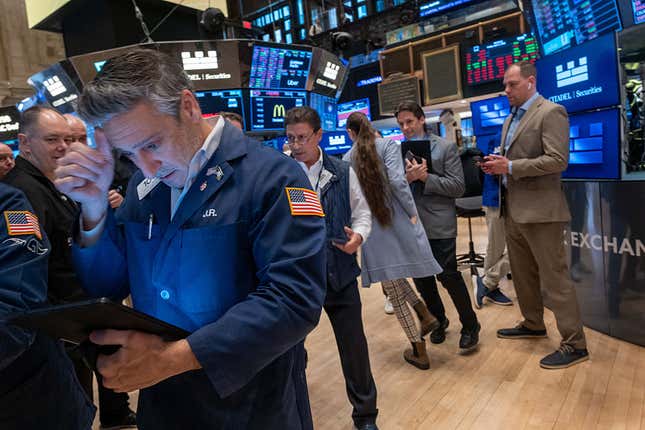
Stocks continued their historic slide Monday, with the Dow Jones Industrial Average down 349 points (0.91%) and the S&P 500 losing 12 points (0.23%). The Dow now has lost 11.3% in the past month, while the S&P has shed 12.3%. The Nasdaq was up 15 points, or 0.1%, but remains down 19% this year.
The recent decline, brought about as President Donald Trump’s tariffs wreak havoc and create long-term uncertainty, has prompted discussions of a bear market.
But what does that mean, exactly?
What is a bear market?
A bear market occurs when stock market indexes decline 20% from their recent peaks. In the U.S., these indexes can include the Dow Jones Industrial Average, the S&P 500, and the Nasdaq.
Which indexes are in a bear market?
The tech-heavy Nasdaq is already in a bear market — it’s down more than 20% from its December 16 peak.
The S&P 500 and Dow Jones aren’t there yet, but they might not be far behind. The S&P 500 is down 17% from its high on February 19, while the Dow has declined 15% since December 4.
What are some other times U.S. stocks have been in a bear market?
The U.S. entered a bear market in March 2020 following the onset of the COVID-19 pandemic. In early 2022, inflation fears sent the S&P 500 into a bear market that lasted for much of the year.
Stocks entered a bear market during the 2007 financial crash, with the S&P losing 51.9% during the recession that followed. After the dot-com bubble burst in 2000, the index fell by 36.8% over the course of one-and-a-half years.
Our free, fast, and fun briefing on the global economy, delivered every weekday morning.
